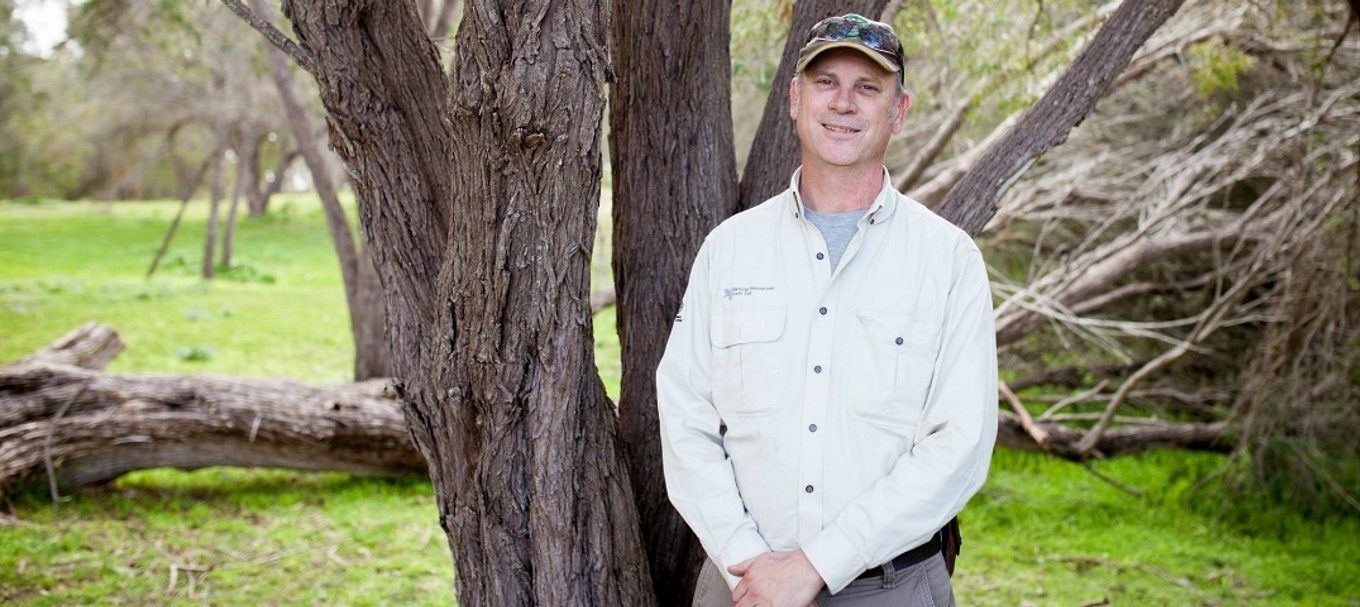
Recognising our rangers
To mark the occasion we spoke to three rangers about the job, why they love it and the special things they encounter in South Australia’s parks.
Name: Simon Oster
Job title: Senior Ranger at Deep Creek National Park
How did you get into this line of work?
I grew up with parents who always took the family away to visit South Australia’s national parks, go camping and enjoy nature. I suppose something ‘rubbed off’, and my appreciation for nature and passion for conservation and the great outdoors was embedded at a young age. I simply followed my instincts and pursued a career as a ranger.
What does a ‘normal’ day as a ranger look like for you?
This job has no boundaries! One day could involve administration duties, but change dramatically within minutes. Rescuing wildlife, assisting visitors, working with experts and researchers, responding to emergencies, witnessing amazing wildlife behaviours and encounters, and sharing stories with colleagues and the public usually make for a fascinating and totally enjoyable day. The unpredictability of how any one day might pan out adds to the appeal of the job.
What’s the most rewarding part of your job?
I think the most rewarding part is making a difference to the protection of our reserve system, and educating others to respect and share conservation values. I work with like-minded, talented and self-motivated people who are conservation-oriented and capable of achieving great things – I find that rewarding in itself!
Name: Jae Ellis
Job title: Senior Ranger at Belair National Park
What does a ‘normal’ day as a ranger look like for you?
It’s quite amazing because every ranger in the state has a different job. It very much depends on what’s happening in the district at the time, what time of year it is, and how busy it is. In summer it’s a lot of fire management work, in winter there’s more of a focus on managing contractors to undertake work in the park, and during the holiday season there’s a focus on visitor management. I’m also involved in wildlife management and working with volunteers.
What’s the most rewarding part of your job?
One of the most rewarding parts of my job was when I was working at Gawler Ranges National Park with the Bounceback Project, helping to recover Yellow-footed Rock Wallabies. The project’s been going for more than 20 years now and is about restoring natural habitats and improving biodiversity. The number of wallabies in the area has gone from being in the 10s and 20s to more than 100 animals, and it’s not just the wallabies that have benefited. The project has also helped species like goannas and malleefowl.
How do people get into this kind of career?
It’s an incredibly competitive field to get into because there are such limited positions. Tertiary studies in an environmental field and participation in the Department of Environment, Water and Natural Resources graduate scheme is generally the way to go.
Name: Andrew Hansford (pictured)
Job title: Ranger at Naracoorte Caves National Park and World Heritage Area
How did you get into this line of work?
I’ve worked here for 20 years, originally as a guide in the park’s unique World Heritage listed caves before moving into the construction and maintenance side of things. I’ve also filled in for a number of ranger roles in other nearby parks.
What does a ‘normal’ day as a ranger look like for you?
It’s all about service delivery – the ongoing maintenance of visitor areas including weeding, spraying and generally looking after the 600 hectares of the park. I spend a lot of time talking to visitors, I’ll stop and direct them to different areas of the park and talk to them about things to look at and do, including different species they might see or the best picnic spots.
What’s one of the most amazing things you’ve seen at the park?
We see all sorts of things here. I’ve seen an albino ringtail possum which was pretty special, but one of the most interesting things I’ve seen was an echidna train go across the road in front of me. This is something that happens in mating season, where male echidnas form a line behind a female and follow her in an attempt to mate. Basically perseverance pays off, the last one left in the line wins! I’ve only seen this twice in 20 years.
Now that you know a little more about what our rangers do and why they love it, why not head into one of our parks and check out South Australia’s beautiful and unique environments for yourself.





